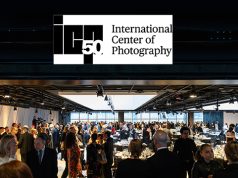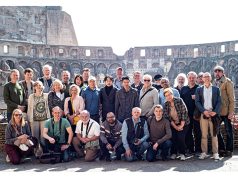
What’s an advanced enthusiast digital SLR? Well, that’s easy. It’s a DSLR that provides features, performance, image quality and pride of possession that meets the demands and desires of advanced enthusiast shooters—that is, people who are knowledgeable and passionate about photography and who use it primarily as a means of creative expression.
As it turns out, there’s a more fundamental question that’s a lot tougher to answer, namely, what is an SLR? Technically it’s a “through-the-lens-viewing” camera in which an angled mirror behind the lens reflects the image formed by the lens up into an optical viewfinder and moves out of the light path at the instant of exposure. Therefore, strictly speaking, none of the cameras here that use an electronic viewfinder (EVF) instead of an optical viewfinder (OVF) is really an SLR or a DSLR.
However, over the past few years the marketplace and consumers have decided otherwise. With vast improvements in color fidelity, viewing performance and refresh rates, the best EVF cameras, including those covered here, now provide a DSLR shooting experience along with, in most cases, a DSLR-like form factor. And so, as the saying goes, “If it quacks like a duck . . .” Even those who stand steadfast for the OVF/EVF distinction would have to concede that the cameras detailed here are competing for the same market, and that’s what really matters to dealers.
Some of the key features advanced enthusiasts prioritize in making their choices in this category are: high-resolution sensors; responsive high-performance AF and AE systems; Full HD video capture with stereo sound and level adjustments; high-res LCDs and EVFs; robust, weather-sealed bodies; cool (retro or classic) form factors; and, to an increasing extent, Wi-Fi connectivity that provides remote shooting, viewing and sharing capability using a smartphone, tablet or PC.
Advanced enthusiasts attracted to these cameras are well worth cultivating because they tend to be repeat customers and buy high-end cameras, lenses and accessories. Also, like you, they’re in it for the long haul.
Advanced Enthusiast DSLR Roundup
Olympus OM-D E-M1. The newly announced Olympus Micro Four Thirds flagship has the same classic DSLR look as its predecessor, but its real-world performance was notably enhanced thanks to an upgraded 16.3MP High-Speed Live MOS sensor coupled to a new TruPic VII processor that provides increased responsiveness, enhanced image quality and improved performance at high sensitivity settings to ISO 25,600. It also has a larger, wider view, higher magnification, 2.36m-dot eye-level electronic viewfinder (EVF) that provides a 100% view as well as a 3.0-inch, high-res 1,037k-dot, tilting touch-screen LCD monitor. An innovative five-axis sensor-shift image-stabilization (IS) system delivers shake-free images when shooting stills or 1,920×1080 Full HD video handheld. It can now shoot full-res bursts with AF at 10 fps, and has built-in wireless connectivity that links to iOS and Android devices using an intuitive QR Code Connect system and app. The E-M1 offers an enhanced customizable multifunction control array similar to that in high-end pro DSLRs—and all this is built into a rugged, dustproof, weatherproof magnesium alloy body. $1,399.99 body only. olympusamerica.com
Pentax K-3. Just announced as we went to press, this top-of-the-line model takes the classic Pentax K line to a higher level with an upgraded 24MP APS-C-format CMOS sensor (up from 16.3MP in the K-5 II/IIs) and an ingenious user-selectable floating image sensor mechanism that emulates the effect of an optical anti-aliasing filter to give users the choice to leave it off for superior resolution and detail capture, or turn it on to eliminate moiré patterns. Other enthusiast-aimed upgrades include: a new SAFOX AE/AF system with 27 cross-type AF points and an 86K RGB AE sensor to provide superior subject identification to enhance AF accuracy; an 8.3-fps maximum full-res burst rate; multi-pattern auto white balance; dual SD card slots; and a 3.2-inch, 1037k LCD. The built-in sensor-based shake reduction system is now said to provide a four-stop advantage in handheld shooting. Support for smartphone and PC connectivity is included, and remote shutter release, viewing and importing images are possible with a Pentax Edition Flu card. Legacy features include a 1/8,000-sec shutter speed; Full HD 1080p recording; a mike jack; and a sealed, weather-resistant magnesium alloy body. $1,299.95 body only. ricoh-imaging.com
Panasonic Lumix DMC-GH3. This intelligently upgraded Micro Four Thirds model is technically a mirrorless compact, but it provides the shooting experience of a DSLR. It features a 16.05MP Live MOS sensor coupled to a 4-CPU Venus engine, which enables the GH3 to capture high-res JPEG and RAW files and Full HD 1080p video at 60p 50Mbps and cinematic 24p 72Mbps. It also features OLED displays both for the monitor and the live view EVF, full-area and pinpoint AF, auto HDR for still photos, electronic front and rear shutters, a built-in level, Wi-Fi connectivity and 40%, 48% and 89% slow motion video modes. A more ergonomic button layout improves operational speed and convenience, and all these features are housed in a tough, lightweight, weather-sealed magnesium alloy body. $1,299.00 body only.
Consumers seeking a similar shooting experience in a somewhat more compact, rangefinder-style package may gravitate toward the Panasonic Lumix DMC-GX7, which also has: a 16MP Live MOS sensor; a 3.0-inch, 1,040k-dot tilting touch-screen LCD; a 90º tilting, 2,764k-dot EVF; and built-in Wi-Fi with NFC connectivity. $999. panasonic.com
Samsung NX300. Samsung’s cool retro-styled top-of-the-line NX-mount model offers an impressive enthusiast-aimed SLR-like feature set, performance and shooting experience at a relatively modest price point. It provides a high-res 20.3MP APS-C-format CMOS sensor, a big 3.31-inch, 768k-dot AMOLED tilt/touch-screen display, and Full HD 1080p video capture at 60 fps. And it comes with an ingenious and powerful shoe-mount SEF-8A flash unit that flips up to turn on and down to turn off. It also features a hybrid AF system that combines phase-detection and contrast-detection AF, fast dual-channel Wi-Fi that works with smartphones and other devices, ISO settings from 100–25,600, a continuous full-res burst rate of 8.6 fps, and an Adobe Lightroom bundle. $750 with 20–50mm f/3.5–5.6 ED II lens. samsung.com
Sigma SD1 Merrill. Sigma’s pro/enthusiast flagship DSLR features a higher res, bigger (full APS-C-format) version of the unique three-layer Foveon X3 sensor that works like film to deliver full color information at every pixel location in each of its three layers—for a total of 46MP. Other upgrades include: a Dual True II processing engine; 11-point twin-cross AF sensor; and a 3.0-inch LCD, all built into an upgraded magnesium body with O-ring-sealed buttons and enhanced weatherproofing. Key performance upgrades include: a 5-fps maximum burst rate; a shutter rated for 100,000 cycles; an 11-point twin cross-sensor AF system; ISO 6400; and shutter speeds to 1/8,000 sec. While there is no live view, video capture or tethering capability, it does offer pro features like micro AF adjustment, three custom settings in exposure mode (PASM), and an easily removable IR filter for infrared shooting. Where the SD1 really shines is in its imaging performance, especially in the ISO 100–400 range where it delivers outstanding images with a distinctive film-like character that captures exquisite detail and color rendition. $2,299 body only. sigmaphoto.com
Fujifilm X-Pro1. This elegant 16.3MP APS-C-format rangefinder-style camera is the first in Fujifilm’s impressive X series to combine interchangeable lens capability with its signature hybrid multi viewfinder that lets users switch between an optical (OVF) and electronic viewfinder (EVF). When a Fujinon XF lens is mounted, lens data is sent to the camera and the viewfinder magnification (two types) and frame size (multiple steps) are automatically adjusted, making switching between OVF and EVF viewing a seamless process. The X-Pro1 also incorporates Fujifilm’s X-Trans CMOS sensor that uses a special color filter array that is claimed to deliver superior color accuracy, sharpness, and freedom from moiré patterns without using a conventional low-pass filter. Other key features include: a 3.0-inch, RGBW LCD monitor; 1,920×1,080 Full HD video capture with stereo sound; an ultrasonic sensor cleaning system; and a TTL hot shoe. $1,199 body only. fujifilmusa.com
Sony SLT-A99. The Alpha 99 (or the SLT-A99) is Sony’s flagship in its Alpha Translucent Mirror technology line of cameras that provide full-time AF before, during and after the exposure. Its pro/prosumer performance credentials include a full-frame 24.3MP Exmor CMOS sensor, a tilting 1,228k-dot, 3.0-inch XTRA Fine TruBlack LCD, an XGA-res OLED electronic viewfinder, a 6-fps maximum full-frame burst rate, an advanced Bionz image processor, and an enhanced quick navi pro control interface. It also features: a dual AF system that combines phase-detection and contrast-detection AF; a 1,200-zone evaluative metering system; built-in GPS; auto HDR; Full HD 1,920×1,080p recording at 60 fps; SteadyShot sensor-shift image stabilization; area-specific noise reduction; a quiet multi-control dial optimized for video shooting; and a robust magnesium body with weather sealing. $2,798 body only. sony.com
Canon EOS 6D. This full-frame model is destined for stardom among advanced enthusiasts because it delivers “the 5D Mark III experience” for nearly $1,500 less. Its 20.2MP full-frame CMOS sensor, 3.0-inch Clear View LCD, 11-point AF system with a center cross sensor, 97%-view pentaprism and 4.5-fps maximum burst rate don’t quite match the elite specs of the formidable 5D Mark III, but it does offer built-in Wi-Fi and GPS connectivity, 63-zone dual-layer metering, Full HD video capture at 1080p with manual controls, built-in HDR, a Digic 5+ image processor, 14-bit A/D conversion, in-camera RAW processing and JPEG conversion, and ISO settings to 102,400. Its performance will surely delight legions of enthusiast and pro Canon shooters who want to get into full-frame photography at a more affordable price. $1,999 body only. usa.canon.com
Nikon D800. This ultra-high-resolution full-frame DSLR has a 36.3MP FX-format CMOS sensor and high-end features that include: ISO settings to 25,600; advanced scene recognition using a 91,000-pixel RGB 3D color Matrix metering system that works in conjunction with Nikon’s 51-point AF system to provide enhanced responsiveness; face detection AF; auto white balance accuracy; and i-TTL flash performance. It captures Full HD 1,920×1,080 video at 24 and 30 fps and provides multiple focusing modes and multi-area FX- or DX-format with 16:9 cropping. Its big 3.2-inch, 921k-dot LCD provides a live view selector for simultaneous live view output on external monitors while shooting uncompressed video using HDMI. There’s also a 20-level audio adjustment with on-screen indicators for mike and headphones, linear PCM audio encoding capability, a 46x view for focus confirmation and customizable controls. $2,999.95 body only. nikonusa.com





